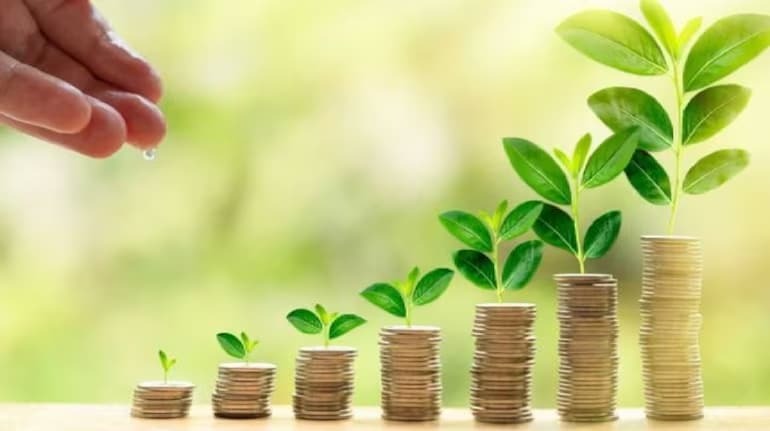
Who doesn't want a good bank balance or wealth to live a good life after retirement? But what is the right way to fulfill this desire? Is it necessary to save big to build a big bank balance? Many people feel that to create a big corpus the investment amount should also be big. But this idea is not correct. If even small savings are made regularly and that money is invested in the right place, then a good fund can be created in the long run.
Don't ignore small savings
Have you ever tried to calculate how much of your daily food or travel expenses was unnecessary or could have been saved? If not, then if you make a habit of saving and investing a little money from all the daily expenses including travel, tea, cigarettes or entertainment, you can get big support in future. A systematic investment plan of mutual funds can help you in this. Because by investing through this, you get the benefit of both compounding and averaging. Here we have calculated how saving Rs 200 per day can make you a millionaire in 20 years.
facility to invest small amounts
SIP has the feature that instead of investing in lump sum, the investor can invest a fixed amount in mutual funds every month. That is, in this option your entire money is not blocked at one time or at one place. Its advantage is that you get a chance to evaluate your investments from time to time. Moreover, it also encourages disciplined investment. There are many such mutual funds in the market, in which SIP investors have been getting 15% to 20% annual returns for the last 20 years.
Make a plan to become a millionaire by investing Rs 200 daily
SBI Consumption Opportunities Fund
SIP returns in 20 years: 19.29 percent per annum
Monthly SIP Rs 200 per day: Rs 6000
Total investment in 20 years: Around Rs 14.40 lakh
Fund value deposited in 20 years: Rs 1,70,43,225 (approximately Rs 1.7 crore)
Profit: Rs 1,56,03,225 (approximately Rs 1.56 crore)
Quant Smallcap Fund
SIP returns in 20 years: 18.68 percent per annum
Monthly SIP Rs 200 per day: Rs 6000
Total investment in 20 years: Around Rs 14.40 lakh
Fund value after 20 years: Rs 1,55,55,934 (approximately Rs 1.55 crore)
Profit: Rs 1,41,15,934 (approximately Rs 1.41 crore)
ICICI Pru Technology Fund
SIP returns in 20 years: 18.58 percent per annum
Monthly SIP Rs 200 per day: Rs 6000
Total investment in 20 years: Around Rs 14.40 lakh
Fund value after 20 years: Rs 1,53,25,727 (approximately Rs 1.53 crore)
Profit: Rs 1,38,85,727 (approximately Rs 1.39 crore)
Nippon India Growth Fund
SIP returns in 20 years: 18.25 percent per annum
Monthly SIP Rs 200 per day: Rs 6000
Total investment in 20 years: Around Rs 14.40 lakh
SIP value after 20 years: Rs 1,45,91,721 (approximately Rs 1.46 crore)
Profit: Rs 1,31,51,721 (approximately Rs 1.31 crore)
Sundaram Midcap Fund
SIP returns in 20 years: 18.25 percent per annum
Monthly SIP Rs 200 per day: Rs 6000
Total investment in 20 years: Around Rs 14.40 lakh
Fund value after 20 years: Rs 1,45,48,471 (approximately Rs 1.45 crore)
Profit: Rs 1,31,08,471 (approximately Rs 1.31 crore)
What are the benefits of SIP?
The biggest advantage of investing through SIP is that you can accumulate big capital by investing small amounts regularly. This is a disciplined method of regular investment. There is flexibility in investing through SIP regarding the duration and amount of investment. You can also opt for monthly, quarterly or half yearly SIP as per your convenience. If ever any problem arises, you can stop the SIP or if you need money in an emergency, you can also withdraw money from the funds deposited through SIP.
By investing through SIP you get average benefits. That is, if you invest when the market is falling, you will be allotted more units and when the market is rising, the number of units allotted will be less. Overall, in the long run your investment will remain at an average level despite market fluctuations. Apart from this, if you invest continuously through SIP for a long time, you also get the benefit of compounding.
What is compounding?
If you have invested somewhere and you get interest or returns on it throughout the year, then it gets added to the principal amount of the next year and then next year also you get interest or returns on it. This is called compounding. For example, if you invest Rs 1 lakh and get 10 percent annual return on it, your capital after one year will be Rs 1 lakh 10 thousand. That means next year you will get 10 percent interest or return on this Rs 1 lakh 10 thousand. You will continue to get returns like this till maturity. The longer the investment lasts, the more visible the benefits of compounding will be.
 look news india
look news india